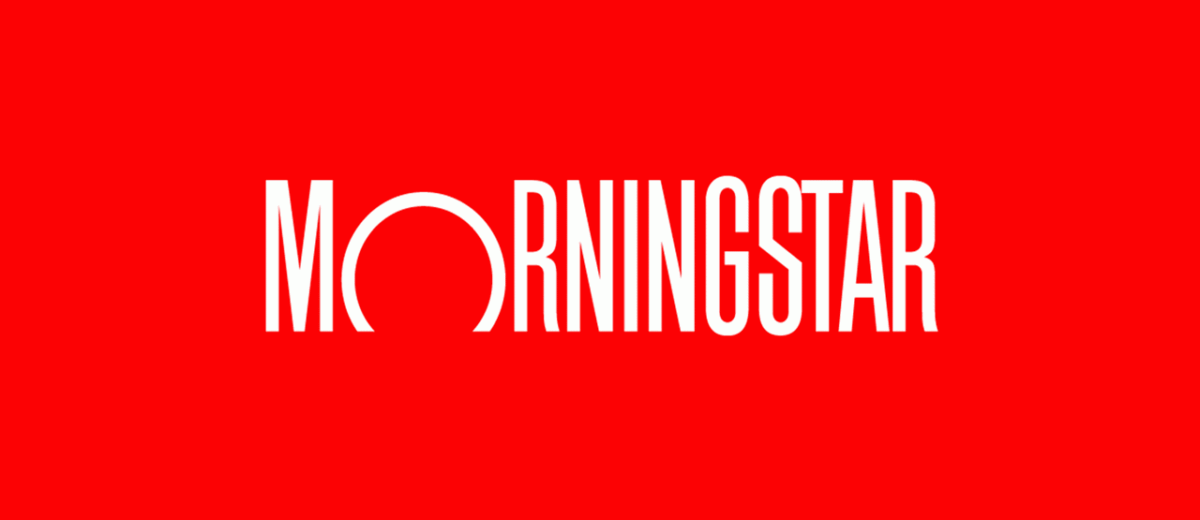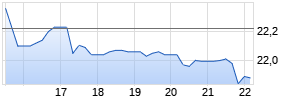
Peabody Reports Earnings For Quarter And Year Ended December 31, 2017
PR Newswire
ST. LOUIS, Feb. 7, 2018
ST. LOUIS, Feb. 7, 2018 /PRNewswire/ -- Peabody (NYSE: BTU) today announced its fourth quarter 2017 operating results, including revenues of $1.52 billion, income from continuing operations, net of income taxes of $378.0 million, net income attributable to common stockholders of $317.4 million, diluted earnings per share from continuing operations of $2.47 and Adjusted EBITDA 1 of $416.2 million, the largest result in five years.
"A highly successful fourth quarter capped a year of substantial achievement for Peabody, as the company delivered results and generated value," said Peabody President and Chief Executive Officer Glenn Kellow. "Fourth quarter results reflect strong operational performance, significant cash generation and debt repayment, meaningful release of restricted cash and continued share repurchases, and we have much more progress targeted for 2018. Much of our substantial 2017 cash flows were properly committed to debt reduction and reducing other obligations. We enter 2018 with a strong balance sheet, lower interest expense, minimal taxes, ability to liberate restricted cash, a newly initiated dividend, a simplified capital structure and strong cash flows that we intend to use to further unlock value for our shareholders."
Fourth Quarter 2017 Results
Revenues for the fourth quarter increased 5 percent over the prior year to $1.52 billion on continued robust seaborne pricing and 4 percent higher Australian export volumes, leading to Australia's largest quarterly revenue contribution in five years. Full-year 2017 revenues increased 18 percent over the prior year to $5.58 billion driven by higher Australian metallurgical and thermal coal pricing and an 11 percent increase in Powder River Basin coal shipments.
Fourth quarter income from continuing operations, net of income taxes totaled $378.0 million, reflecting $178.8 million of depreciation, depletion and amortization; $83.1 million of gains on disposals (excluded from Adjusted EBITDA); net mark-to-market gain on actuarially determined liabilities of $45.2 million; and $35.9 million of interest expense. The company's net income tax benefit of $81.6 million includes an estimated benefit resulting from newly enacted tax legislation primarily related to alternative minimum tax credits, which are expected to be refunded in 2019 and beyond.
Net income attributable to common stockholders totaled $317.4 million for the quarter and included $40.9 million of non-cash preferred stock dividends, reflecting the impact of 9 percent voluntary preferred conversions during the quarter and the semi-annual preferred dividend.
Fourth quarter Adjusted EBITDA totaled $416.2 million and included $6.5 million of restructuring charges related to future closure costs for the Millennium Mine. Adjusted EBITDA increased $122.2 million over the prior year, led by increases in Australian revenues and Adjusted EBITDA margins. For the full year, Peabody reported Adjusted EBITDA of $1.49 billion, with Australia and the U.S. operations contributing 56 percent and 44 percent, respectively, of total mining Adjusted EBITDA. Australia's full-year Adjusted EBITDA of $906.7 million marks the platform's largest operating result since 2008.
Australia's fourth quarter Adjusted EBITDA increased 64 percent to $302.8 million, reflecting robust seaborne pricing and continued cost containment. Sales volumes for the Australian platform totaled 8.8 million tons, including 4.0 million tons of metallurgical coal sold at an average price of $127.14 per ton and 3.4 million tons of export thermal coal sold at an average price of $72.89 per ton, with the remainder delivered under domestic contracts. In line with the company's full-year targets, the Australian operations shipped 11.7 million tons of metallurgical coal and 12.5 million tons of export thermal coal in 2017 at average realized prices of $132.29 per ton and $68.95 per ton, respectively.
Fourth quarter Australian thermal coal realized pricing increased 15 percent to $55.22 per ton, driven by strong seaborne demand. The Australian thermal coal segment earned robust Adjusted EBITDA margins of 38 percent, despite modestly higher costs primarily related to sales-related royalties.
Continued strength in seaborne metallurgical coal fundamentals led to fourth quarter segment revenues of $517.3 million, an increase of 27 percent over the prior year. Peabody's Australian metallurgical coal mines sustained its improved second-half cost profile, resulting in fourth quarter costs of $78.03 per ton. Combined, strong seaborne fundamentals and powerful cost performance allowed the Australian metallurgical coal platform to lead the company in total Adjusted EBITDA contributions of $199.9 million and Adjusted EBITDA margins of 39 percent.
For the full year, the Australian platform expanded Adjusted EBITDA margins to 36 percent, an increase of $23.48 per ton compared to the prior year, on strengthening seaborne pricing and a continued focus on costs with productivity improvements, led by record North Goonyella production.
The U.S. operations generated fourth quarter Adjusted EBITDA of $162.1 million and delivered 40.4 million tons of coal, in line with the prior year. Revenues per ton increased 2 percent to $18.38 per ton, primarily due to favorable mix and the benefit of a contractual settlement. U.S. costs per ton increased largely due to planned maintenance in the Midwest and higher fuel costs across operations.
For the full year, the U.S. platform delivered average Adjusted EBITDA margins of 25 percent, largely driven by the benefit of a contractual settlement and improved cost performance in the Western segment related to higher Twentymile Mine volumes and favorable ratio changes at the Kayenta Mine.
Peabody generated fourth quarter operating cash flows of $466.9 million. Total capital expenditures of $98.0 million contributed to total investing cash outflows of $58.5 million and free cash flow2 of $408.4 million.
Note: All comparisons are to fourth quarter 2016 unless otherwise noted. Most income statement measures are not comparable with prior-year periods due to the adoption of fresh-start reporting as of April 1, 2017.
1 Adjusted EBITDA, revenues per ton, costs per ton and Adjusted EBITDA margin per ton and percent are non-GAAP financial measures. Please refer to the tables and related notes in this press release for a reconciliation of non-GAAP financial measures.
Balance Sheet and Capital Return Initiatives
"Peabody ended 2017 strongly with great operational execution that allowed us to exceed our deleveraging and liquidity targets. We successfully put in place and upsized our new revolver, worked with insurers to create a surety bonding program in Australia, and advanced our capital allocation program," said Peabody Executive Vice President and Chief Financial Officer Amy Schwetz. "Our balance sheet is strong and our near-term earnings profile is robust, so our emphasis can now shift more fully toward greater returns of cash to shareholders."
Liquidity
- Liquidity at quarter end totaled $1.24 billion, including $1.01 billion in cash and cash equivalents, $193.8 million of available revolver capacity and $38.1 million of accounts receivable securitization capacity.
- During the fourth quarter, Peabody made significant progress on achieving its 2018 goal of freeing up approximately $200 million to $400 million of its nearly $540 million restricted cash balance by utilizing its new $350 million revolving credit facility and closing on the Burton transaction. As a result, the company's total restricted cash balance has been reduced by one-third to $363.2 million since Sept. 30, 2017.
- In January 2018, the company worked with insurers to successfully issue an initial tranche of approximately $115 million of surety bonds in Australia, and as a result, expects to reduce its restricted cash balance by an equal amount. The company expects to put additional bonding in place over time and ultimately through a combination of letters of credit, bank guarantees and surety bonds, now anticipates releasing nearly all of its remaining restricted cash in 2018.
Deleveraging
- Peabody previously targeted a total of $500 million in voluntary debt reduction by the end of 2018 and a total gross debt balance of $1.2 billion to $1.4 billion over time. Given the company's strong cash generation, Peabody completed its targeted repayments a year in advance, bringing its total debt balance to $1.46 billion as of Dec. 31, 2017. By advancing deleveraging, Peabody was also able to access alternative sources of liquidity and lower fixed charges.
- As a result of the company's meaningful cash position and voluntary debt repayments, Peabody's net debt balance has improved nearly 50 percent since April 2017 to $448.7 million.
Shareholder Returns
- The company executed $107 million of share repurchases in the fourth quarter, bringing total repurchases to $176 million, as the company continues to execute on its authorized $500 million share repurchase program3.
- Today, Peabody announced the initiation of a quarterly dividend, demonstrating the company's strong financial position, cash flow generation profile and commitment to shareholder returns. Peabody's board of directors has declared a quarterly cash dividend of $0.115 per share of the company's common stock payable on March 5, 2018 to shareholders of record on Feb. 19, 2018. The new dividend is the next step of the company's financial approach of generating cash, maintaining a strong balance sheet, investing wisely and returning cash to shareholders. The board of directors will evaluate dividends on a quarterly basis, taking into consideration the company's cash flows and alternative means to create shareholder value.
Preferred Share Conversion
- Peabody's capital structure also was simplified in recent days as all remaining preferred stock was mandatorily converted into common on Jan. 31, 2018. Peabody expects to record a non-cash preferred dividend charge of $102.5 million in the first quarter of 2018 as a result of conversions since Dec. 31, 2017.
2Free cash flow is a non-GAAP measure defined as Net cash provided by operating activities less Net cash used in investing activities. A reconciliation of Net cash provided by operating activities to free cash flow is included at the end of this document.
3 Repurchases will be subject to limitations in the company's debt documents and may be made from time to time at the company's discretion. The specific timing, price and size of purchases will depend on the share price, general market and economic conditions and other considerations. No expiration date has been set for the repurchase program, and the program may be suspended or discontinued at any time.
Industry Fundamentals
Seaborne thermal and metallurgical coal pricing remained elevated through year end as firm demand across the Asia-Pacific region was met with supply tightness.
2017 global seaborne thermal coal demand increased approximately 25 million tonnes over the prior year largely driven by South Korea, China and other developing Pacific countries. South Korean imports continued to show strength in the fourth quarter on new coal capacity and low nuclear availability, leading to an increase in full-year 2017 demand of 16 million tonnes over the prior year. Chinese thermal coal imports increased 5 million tonnes over 2016 on a 5 percent increase in thermal electricity generation. Demand from ASEAN countries increased 8 million tonnes on continued strong economic growth and increases in coal-fueled generation. While India imports declined 11 million tonnes overall for the year, fourth quarter imports rose 17 percent compared to the prior year largely due to depleted stockpiles.
2017 seaborne thermal coal demand outpaced supply as Australian, Colombian and Indonesian thermal coal exports declined from the prior year, despite high pricing levels.
Within seaborne metallurgical coal, 2017 demand was driven by a 5 percent increase in global steel production, with December marking the 20th consecutive month of year-over-year steel production increases. Through year end, Chinese metallurgical coal imports rose approximately 10 million tonnes, or 15 percent, even as steel exports decreased 30 percent year over year. Indian metallurgical coal imports increased approximately 6 percent over the prior year, largely driven by growth in the back half of the year to support rising steel production. Global metallurgical coal supply and demand fundamentals remained tight at year end as total Australian metallurgical exports declined more than 15 million tonnes through December due to cyclone impacts, logistical constraints and industry-wide operational challenges.
Seaborne metallurgical coal prompt prices increased to an average $205 per tonne in the fourth quarter with the index-based settlement price for premium hard coking coal set at approximately $192 per tonne. Peabody negotiated first quarter benchmark low-vol PCI pricing of $156.50 per tonne.
2018 seaborne thermal and metallurgical demand are expected to be most impacted by growth in India and ASEAN countries and potential changes in Chinese policy. Seaborne supply remains tight on continued logistic and operational constraints across the industry.
In the U.S., 2017 coal demand was impacted by mild weather in coal heavy regions, moderate natural gas prices and increased renewable demand. Utility consumption of Southern Powder River Basin coal rose approximately 5 percent in 2017 compared to the prior year, despite overall load, natural gas and total coal demand all decreasing. As a result, Southern Powder River Basin coal inventories declined approximately 9 million tons from the prior year to 54 days of maximum burn. Winter weather continues to reduce stockpile levels across the U.S. resulting in average year-end stockpiles at lows not seen since 2014. U.S. coal production increased approximately 5 percent over 2016 levels, driven by a nearly 60 percent increase in exports, along with rising domestic consumption of Southern Powder River Basin coal.
Looking ahead to 2018, changes in demand for electric power sector consumption of coal is expected to be most impacted by changes in natural gas prices and availability of renewable generation. Peabody projects plant retirements to reduce base demand by approximately 25 to 35 million tons. The 2017 price of natural gas averaged $3.02 per mmBtu, and on average every 20 cent movement in the price of natural gas from those levels equates to an approximate 25 million ton change in U.S. coal demand over the course of the year, subject to regional natural gas prices and availability of renewable generation.
2018 Priorities and Outlook
Peabody continues to deliberately pursue its stated financial approach of generating cash, maintaining financial strength, investing wisely and returning cash to shareholders. The company begins the year also focused on core priorities that include:
- Focusing on safety, productivity and margin maximization from Peabody's operational platforms;
- Within the U.S., reducing our unit costs, improving coal's competitiveness against natural gas and taking actions to preserve coal plants from premature retirement;
- Emphasizing production and logistical efficiencies amid robust demand and pricing for Australian metallurgical and thermal coal;
- Exploring means to continue to upgrade Peabody's metallurgical coal platform, including advancing a new longwall system at North Goonyella that has a secondary benefit of reducing downtime during longwall transitions in 2018 and 2019, and underwriting double digit annual metallurgical coal production for the foreseeable future;
- Managing life extensions and a joint venture at Australian thermal coal mines while also evaluating continued means to layer in longer-term commitments for seaborne thermal coal sales; and
- Finalizing steps to achieve the company's goal of releasing nearly all of its remaining restricted cash in 2018.
First quarter results are expected to benefit from continued strong seaborne metallurgical and thermal coal pricing, offset by lower Australia volumes due to scheduled longwall moves at Metropolitan and Wambo.
In February, Peabody closed on the sale of its 50 percent interest in the coal handling and preparation plant and associated rail loading facility utilized by Millennium. The sale reduces associated operating costs, reclamation obligations and other commitments, while preserving throughput capacity for Peabody's remaining production through 2019.
Peabody is targeting 2018 seaborne metallurgical and thermal export volumes in line with the prior year even as the company is ramping down Millennium production, advancing its North Goonyella longwall move and expecting a greater mix of Wilpinjong volumes delivered under a domestic contract. In the U.S., Peabody is targeting modestly lower PRB volumes based on demand. Capital spending is expected to increase approximately $105 million (at the mid-point) driven by approximately $85 million of project spending for Australian life extension projects and the purchase of a new longwall at North Goonyella, and approximately $40 million in lease termination payments.
Today's earnings call is scheduled for 10 a.m. CST, and will be accompanied by a presentation available at PeabodyEnergy.com.
Peabody (NYSE: BTU) is the leading global pure-play coal company, serving power and steel customers in more than 25 countries on six continents. Peabody offers significant scale, high-quality assets, and diversity in geography and products. Peabody is guided by seven core values: safety, sustainability, leadership, customer focus, integrity, excellence and people. For further information, visit PeabodyEnergy.com.
Contact:
Investors
Julie Gates
314.342.4336
Media
Michelle Constantine
314.342.4347
| Condensed Consolidated Statements of Operations (Unaudited) | |||||||||
| For the Quarters Ended Dec. 31, 2017 and 2016 | |||||||||
| (In Millions, Except Per Share Data) | | | | | |||||
| | | 2017 | | | 2016 | ||||
| | | Successor | | | Predecessor | ||||
| | | Quarter Ended December 31 | |||||||
| | | | | | | ||||
| Tons Sold | 49.8 | | | | 51.7 | | |||
| | | | | | | ||||
| Revenues | $ | 1,517.1 | | | | $ | 1,440.8 | | |
| Operating Costs and Expenses (1) | 1,088.2 | | | | 1,126.4 | | |||
| Depreciation, Depletion and Amortization | 178.8 | | | | 119.9 | | |||
| Asset Retirement Obligation Expenses | 18.9 | | | | 4.5 | | |||
| Selling and Administrative Expenses | 37.6 | | | | 38.8 | | |||
| Net Mark-to-Market Adjustment on Actuarially Determined Liabilities | (45.2) | | | | — | | |||
| Restructuring Charges | 6.5 | | | | — | | |||
| Other Operating (Income) Loss: | | | | | |||||
| Net Gain on Disposals | (83.1) | | | | (5.8) | | |||
| Asset Impairment | — | | | | 230.7 | | |||
| Income from Equity Affiliates | (22.8) | | | | (28.8) | | |||
| Operating Profit (Loss) | 338.2 | | | | (44.9) | | |||
| Interest Expense | 35.9 | | | | 54.9 | | |||
| Loss on Early Debt Extinguishment | 8.0 | | | | 29.5 | | |||
| Interest Income | (2.1) Werbung Mehr Nachrichten zur Peabody Energy Aktie kostenlos abonnieren
E-Mail-Adresse
Bitte überprüfe deine die E-Mail-Adresse.
Benachrichtigungen von ARIVA.DE (Mit der Bestellung akzeptierst du die Datenschutzhinweise) -1  Vielen Dank, dass du dich für unseren Newsletter angemeldet hast. Du erhältst in Kürze eine E-Mail mit einem Aktivierungslink. Hinweis: ARIVA.DE veröffentlicht in dieser Rubrik Analysen, Kolumnen und Nachrichten aus verschiedenen Quellen. Die ARIVA.DE AG ist nicht verantwortlich für Inhalte, die erkennbar von Dritten in den „News“-Bereich dieser Webseite eingestellt worden sind, und macht sich diese nicht zu Eigen. Diese Inhalte sind insbesondere durch eine entsprechende „von“-Kennzeichnung unterhalb der Artikelüberschrift und/oder durch den Link „Um den vollständigen Artikel zu lesen, klicken Sie bitte hier.“ erkennbar; verantwortlich für diese Inhalte ist allein der genannte Dritte. Andere Nutzer interessierten sich auch für folgende News | ||||||||





